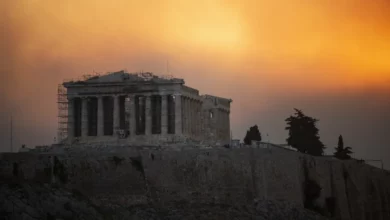In the baffling mix that is the Greek city of Athens, the modern city squeezes into the crevices of the ancient one. Ancient blocks and pillars stand next to concrete. But the city’s hills, exposed in their ancient state, remain preserved, keeping at bay the city’s modern sprawl.
A series of hills, including the Acropolis (home to the famous Parthenon temple) and the Pnyx, form the city’s backbone. Once centers of religious and political life for the ancient Athenians, they now serve as tourist destinations for the daily flood of visitors that emenate from cruise ships pulling into the city's harbor.
Indefatigable, the Acropolis still rises above the city. It is the main attraction, with its carefully preserved monuments and carvings depicting myths of ancient Greece. Its sister hill, the Pnyx, is largely ignored by tourists. But arguably, it has an more profound legacy: its timeworn rocks hosted one of the world's first democracies, an assembly of male Greek citizens who convened almost daily to govern their city-state.
During the months I studied in Athens, I visited the rocky hilltop almost weekly. I was not looking to sightsee, but rather searching for an opportunity to think peacefully. I would sit on the same rocks as the ancient Athenians once did, my eyes directed toward the speaker's podium. I imagined the speeches of demagogues and politicians who argued over how to enforce their laws or whether to wage war on Ancient Persia.
I like to think the echoes of ancient speeches improved my clarity of mind. The last time I visited the Pnyx before I left the city, it was sunset. I tried not to think, just absorb the view.
As the sun lowered in the horizon, I noticed the marble of the neighboring Acropolis, which reflected the setting sun, turn color to a deep dusky peach. It was a phenomenon I had never noticed anywhere in the city. Birds chirped, and I could not hear the voice of a single tourist.




